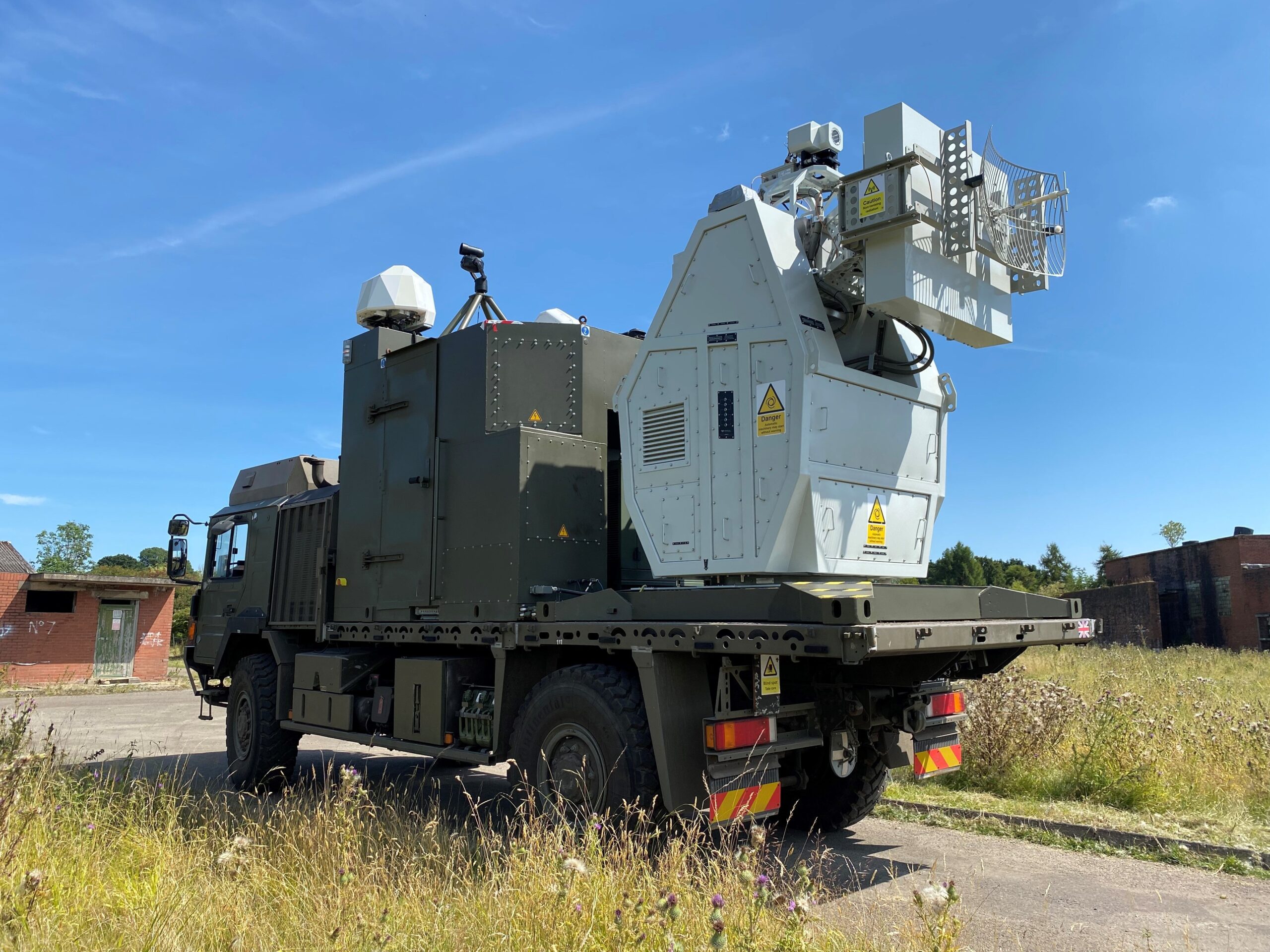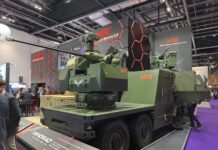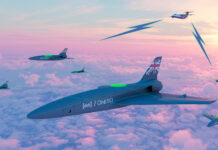As cheap drones transform modern warfare, counter-drone technologies are experiencing a massive surge in interest. This piece explores how the latest developments in C-UAV systems aim to restore the balance against the drone threat.
Revolutions in Military Affairs (RMAs) don’t come along very often. In the last century, the machine gun, tank, aeroplane, submarine and nuclear weapons all fundamentally changed the paradigm of warfare. From laying waste to mass infantry attacks, usurping the horse on the battlefield, finding and striking enemies from the sky or beneath the sea, or threatening the very existence of our species, these RMAs forced militaries to re-evaluate the very core of their Strategic Doctrine, and to rapidly adapt to the new Operational and Tactical realities presented to them.
In the last quarter of the 20th Century, the potential for Unmanned Air Vehicles (UAVs) to become a RMA seemed remote. They were certainly proving effective in the Intelligence, Surveillance and Reconnaissance (ISR) role – where the long endurance and unblinking sensor eye of the MQ-1 Predator and similar platforms created an unheard of level of scrutiny and coverage over important areas. Where once the recce ‘take’ would have been delayed by minutes or even hours as images and wet film were collected and processed, now the ‘ISR gap’ was measured in seconds. Yet Predator et al did not provide a true RMA.
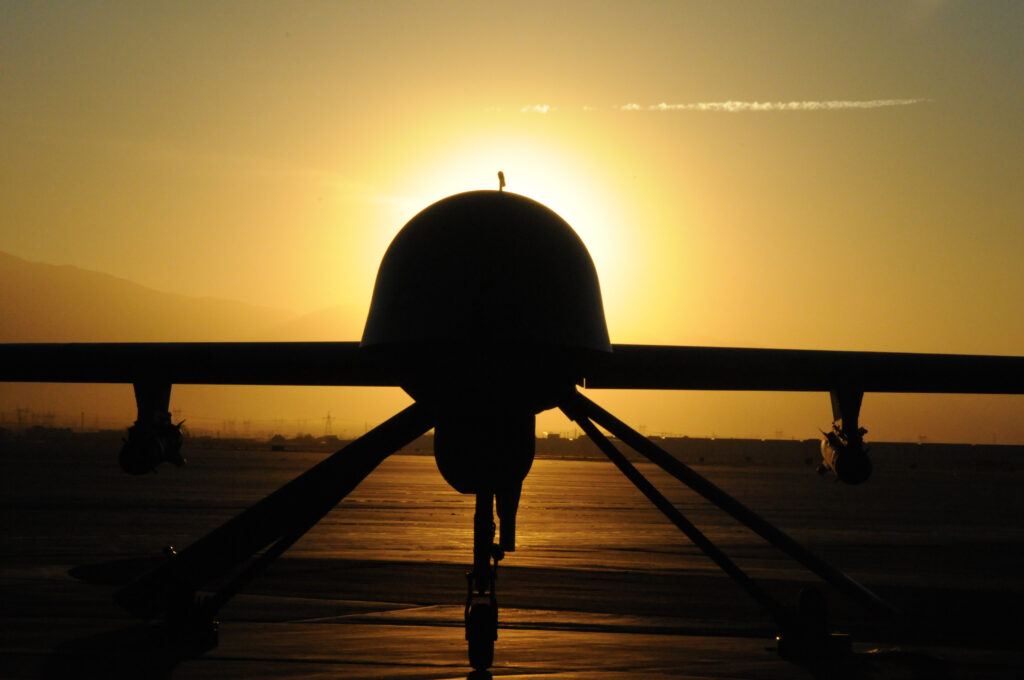
Finally, they were vulnerable. In the face of a determined enemy with a credible Air Defence network, including radar guided Surface-to-Air Missiles (SAMs), medium-calibre radar-laid gun systems and manned interceptors, UAV survival was limited.
Going small
While arguably not a true RMA yet, the potential for UAVs to become a genuine RMA has emerged more recently, and at the opposite end of the cost and complexity scale to RPA. ‘Hobby’ UAV, or ‘drones’, had become something of a staple birthday or Holiday gift. They were cheap, easy to fly with minimal or no training, and they used simple technology found in most mobile phones for stability, control and navigation. They were also being mass produced, especially in China by DJI, who it is estimated have built some 90% of the world’s small ‘drones’. Militaries initially dismissed the concept that such ‘toys’ could have any meaningful battlefield effect. After all, they were small, cheap, built en masse by companies outside the traditional Military Industrial Complex and often used by children – quite the opposite of the ‘reassuringly expensive’ weapon and recce systems offered by established ‘primes’ after protracted development and engineering lifecycles. Not for the first time, the military was wrong. Very wrong.
The first indications that ‘hobby drones’ could be an issue were sporadic weaponisation as assassination weapons in South America, the Middle East, and Africa. The hybrid war in Ukraine was also witnessing the imaginative use of smaller drones for ISR, especially artillery spotting. The Orlan-10 became a harbinger of doom in the Donbas; Ukrainian troops fighting pro-Russian separatists in border areas were painfully aware that an Orlan-10 loitering above their position made an artillery or rocket strike by Russian forces a distinct possibility.
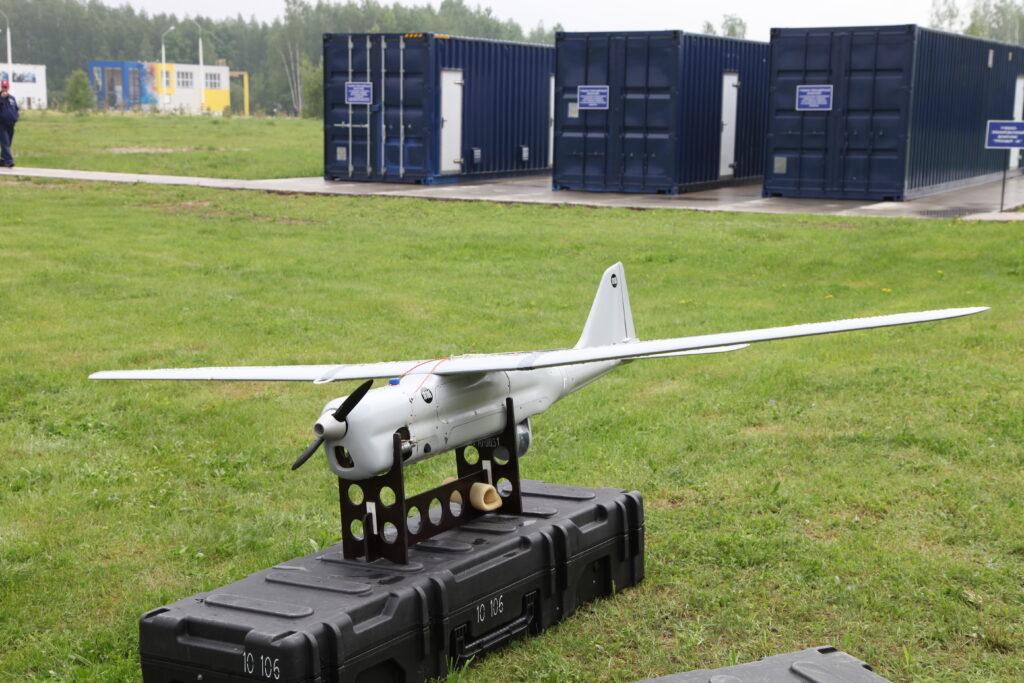
Other international airports were horrified by the ease with which Gatwick had been paralysed. It highlighted the vulnerability of Critical National Infrastructure (CNI) to drones. Whilst closing Gatwick only proved costly in financial terms, what impact could the more nefarious use of drones have on power stations, government facilities, prisons and military establishments? What if a drone operator targeted an airliner taking off or landing?
Unsurprisingly, several companies rushed to fill this newly identified capability ‘gap’. Within weeks, C-UAV systems were very publicly deployed to Gatwick and Heathrow airports in the UK. How effective these systems were, or indeed are, remains open to speculation – but the intent was clear: ‘Don’t bother trying, you won’t succeed – worse, we’ll find you and prosecute you’. While probably enough of an incentive to deter low-level interference, this was unlikely to prevent a more motivated actor from attempting to disrupt or even attack operations.
While Gatwick spurred the rapid deployment of ‘First Generation’ C-UAV systems, the true acceleration has come since the start of Russia’s 24 February 2022 full-scale invasion of Ukraine. Both sides have made extensive use of small and cheap drones as intelligence, surveillance, and reconnaissance (ISR), target acquisition and even direct attack platforms. Newsfeeds and social media accounts have become congested with videos of drones finding opposition units and watching dispassionately as artillery and rocket fire pours down upon them, conducting correction of fire and instant battle damage assessment (BDA). As the war continued, there was a sharp increase in first person view (FPV) drones being used to attack vehicles, artillery and troops in the open.
What really has Western militaries worried is that these drones don’t require sophisticated electronics, so can largely bypass sanctions, are cheap and can be produced, deployed and used at a large scale far in excess of more complex and expensive traditional loitering and guided munitions.
Detecting & tracking the threat
Walk the floors of any major Defence exhibition since 2022 and you’ll see ample evidence of the seriousness with which the C-UAV fight is being taken. From man portable tech to sophisticated vehicle mounted systems, C-UAV systems are now proliferating almost as quickly as the drones themselves. However, how do they work, how effective are they, and what is the current direction of travel in technology terms?
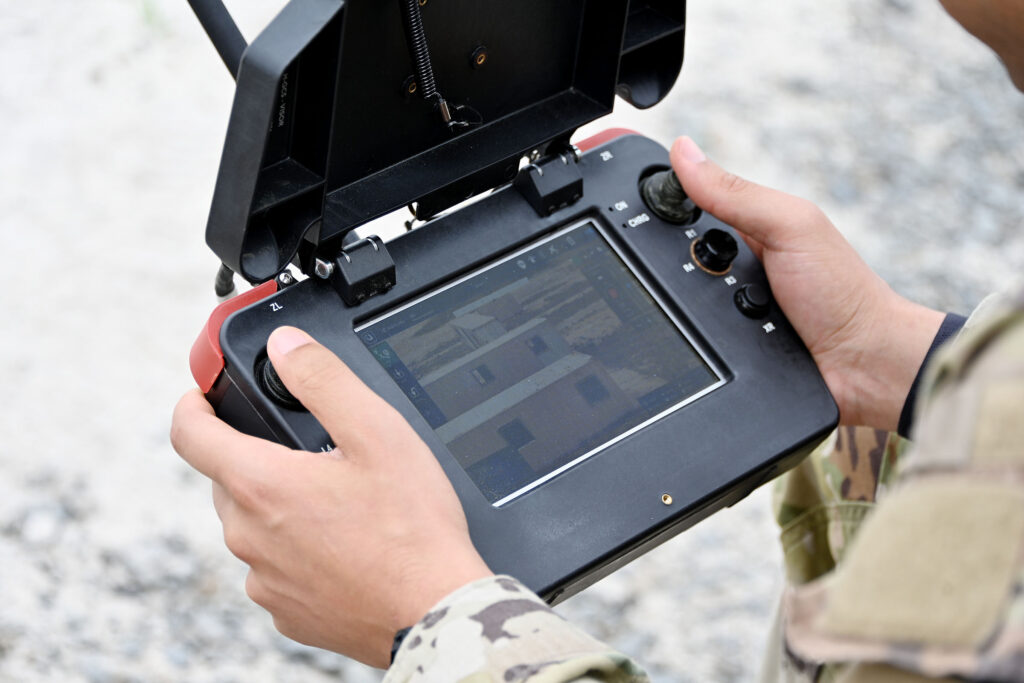
If the drone will not ‘comply’ with civil norms, then detection can be achieved by other means, both passive and active. Passive detection can be the deployment of optoelectronic day or infrared (IR) cameras, or the use of acoustic sensors. All have limitations due to the difficulty in detecting a small UAV at a tactically useful range. At night, a day camera will be largely useless unless the UAV is silhouetted against afterglow or starlight, while IR cameras can be expensive. Acoustic sensing only gives a fleeting warning – normally that a UAV has passed by – which is often too late for any action to be taken.
Radar is the obvious ‘active’ detection capability, but also tend to be expensive. Many of the ‘Gen 1’ C-UAV systems used radars repurposed from other areas in a vendor’s product portfolio – such as personnel and vehicle detectors. The issue with repurposing a radar is that while, technically, a UAV is within detection parameters, by adjusting settings to detect a UAV it often opens up significant false alarm potential (such as birds), as many UAVs are small and relatively slow-moving targets. Additionally, lighting up a traditional Fire Control Radar (FCR) is often akin to a standing invitation for an Anti-Radiation Missile (ARM) to come calling. However, newer C-UAV systems have changed the approach to radar detection. Electronically scanned (E-Scan) radars have lower power outputs and operate in frequencies well away from the ‘SEAD Window’. They also use electronic beamforming to focus energy and reduce side-lobes to make detection more difficult. E-Scan C-UAV radars can also look for different parts of the ‘target’, such as the micro-doppler return off a UAV’s rotor blades. Such radars are also small, lightweight, mechanically simple and therefore often much cheaper to buy and maintain than a traditional system – making them ideal for the C-UAV role on a modestly-sized vehicle or ship mount.
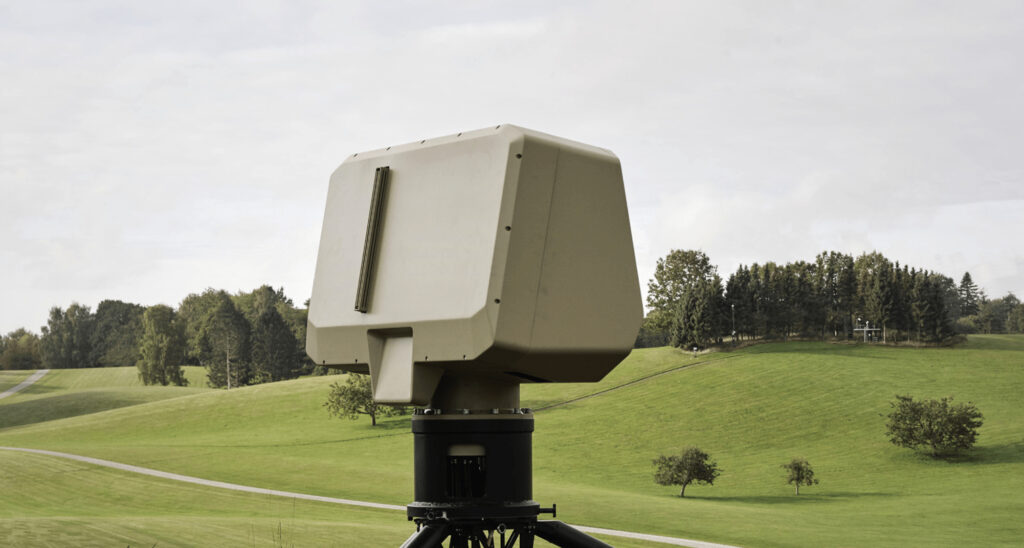
It’s easy to overlook ‘identify’ as not being as important as ‘detect’ or ‘track’. However, a Positive ID (PID) on the UAV can be a critical piece of information. Initially, it’s essential to know if the UAV is friendly or hostile. Unlike manned aircraft and larger UAVs, small tactical UAVs rarely carry Identification Friend-or-Foe (IFF) or Combat ID (CID) due to weight and cost issues, nor are they included in the Air Tasking Order (ATO). Furthermore, the vast majority of their users are utterly ignorant of the ATO and associated Air Control Measures (ACMs). If small UAV cannot network to the Common Operating Picture (COP) for CID, then the onus will fall on the C-UAV operator to hold ‘weapons tight’ (only engaging targets confirmed as hostile) if a friendly UAV is detected and tracked. This significantly increases the risks of fratricidal ‘blue-on-blue’ incidents.
Identification is also important to understand the type of the UAV and, by extension, the nature of the threat it poses. A radar can be used to cue the optronics for a closer look, or even make an ID based upon micro-doppler blade returns. An Orlan-10 style drone, for example, can be easily associated with ISR and TA and therefore might pose a grievous threat to friendly forces. A small quadcopter carrying a package might be a weapon or cargo. Such nuance can be important; the C-UAV operator may not wish to give away the location of an effector needlessly. In a civil setting, the ‘identify’ function could help with an estimation of how long the drone is likely to remain ‘on station’ and, crucially, using a reference library, understand if it has been modified in any way. The nature of the response, and any effector applied, relies upon timely and accurate threat estimation such that if an electronic or kinetic effect is required, the chain of command can be informed and a decision made before the UAV reaches its target. What that effect should or could be is the final part of the cycle.
Neutralising the threat
Once the threat is detected and tracked, and identified, the C-UAV operator’s attention moves to neutralisation. ‘1st gen’ C-UAV systems, could often exploit the UAV’s reliance on a command link with the GCS. The link is usually unencrypted and of modest power, so can be easily jammed. Breaking the link to the GCS normally results in the drone applying a ‘lost link logic’ routine, which, usually mandates that the drone holds its last position (using GPS if available) for a set amount of time to see if the link is re-established, then either:
- Attempt to return to launch site; OR
- land at current position and power down.

However, exploiting the RF command link and jamming it and/or GNSS is problematic. There are legal restrictions in many countries about employing any form of RF jamming – let alone in the vicinity of airports. Additionally, most civil-sourced drones operate in the 2.4-5 GHz frequency range. If those numbers sound familiar, they should do – they are the most common WiFi frequencies as laid down by IEEE 802.11. Jamming a drone could cause significant disruption to other vital communications, and interfering with GNSS could put aircraft and other systems at risk – especially in bad weather.
However, on a battlefield such niceties can be ignored. Several Pro-Kremlin bloggers have noted that swathes of territory are being denied to Russian drone operators by Ukrainian jamming of navigation, telemetry/video and GNSS services – rendering some tactical drones unflyable. However, not all UAV rely upon RF command links or GNSS. As seen over 2024, drones with un-jammable fibre optic command links are becoming increasingly common in Ukraine, particularly in Russian service. Aside from this, advances in automation and artificial intelligence (AI) have made it possible to employ drones capable of identifying and engaging targets without input from a human operator.
When jamming isn’t an option, the alternative is to kinetically defeat the UAV. The industry seems to be, thankfully, past the point now of thinking a soldier with a gun can reliably down a drone. Recent footage of Ukrainian drones flying slowly along predictable flight paths, in daylight, targeting Russian ships in harbour in Crimea, has a soundtrack alive with the crackle of ineffective gunfire. Unless a weapon is optically, radar or laser laid, the chances of a telling hit on a UAV is slight. The solution lays in a combination of 3D tracking, weapon stabilisation, highly accurate pointing and proximity-fuzed ammunition of a large enough calibre to create a ‘kill zone’ commensurate with the accuracy of the gun system at the required range.
Realistically this means 20 mm or bigger, and the 30mm M230LF Bushmaster is rapidly becoming the West’s ‘C-UAV cannon of choice’. As used in the AH-64, the M230LF can exploit different ammunition subtypes, including the bespoke XM1211 C-UAV High Explosive Proximity (HEP) round. The USMC’s MADIS system exploits a Kongsberg RS6 remote weapon station (RWS) to carry the XM914 (a variant in the M230 cannon family) and sensors on the JLTV 4×4 platform. The EOS Slinger RWS also mounts the M230LF, with an Echodyne EchoGuard active electronically scanned array (AESA) radar, optoelectronic sighting system with day and thermal channels, a laser rangefinder for pointing accuracy, and a wind sensor, all of which maximise the chances of a ‘first shot, first kill’ capability. Such accuracy reduces the chances of detection, conserves ammunition and minimises friendly or non-combatant damage or injury.
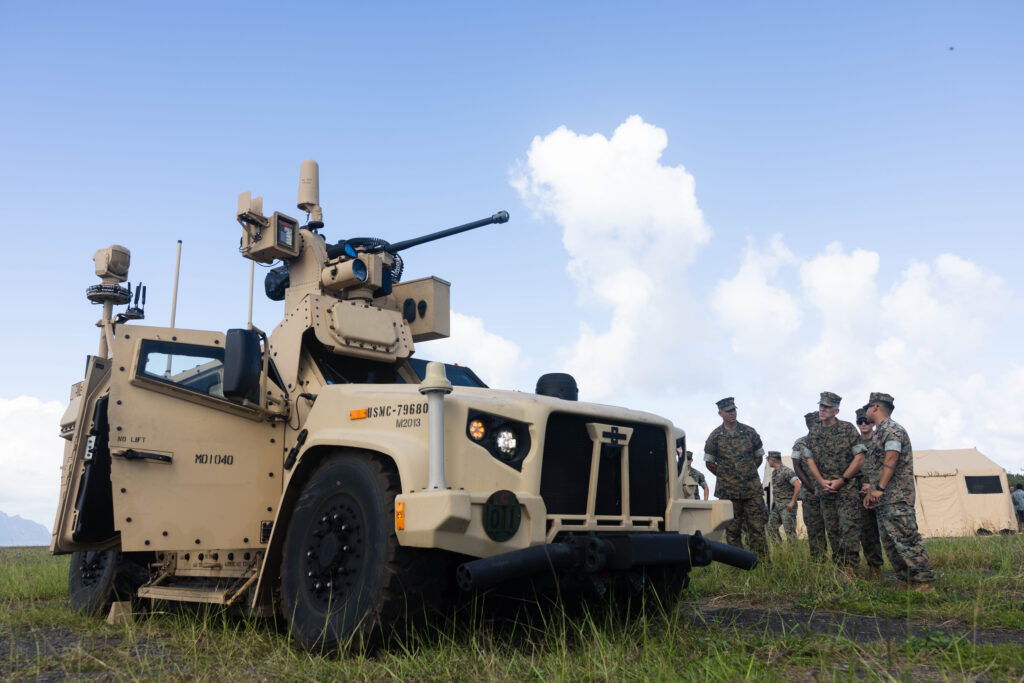
US company Epirus’ Leonidas, and the UK’s Radio Frequency Directed Energy Weapon (RFDEW) being developed under Project Ealing, are examples of leading HPM system projects. Capable of delivering a train of high-energy electromagnetic pulses (EMP), such systems can target individual UAVs or swarms. The electromagnetic effect they deliver can cause damage or disruption to electronic components, such as power, flight control and communications systems – either rendering the drone inert while in flight, or severely compromising its mission effectiveness. While manufacturers may choose to ‘harden’ their drones against EMP, to do so dramatically increases weight, size and cost while reducing payload. As well as the added bonus of being effective against swarms, HPM systems are very cheap per shot when compared to cannon ammunition, let alone missiles, and the depth of ‘magazine’ is theoretically only limited by the amount of electrical power available – making them persistent effectors, albeit ones that will inevitably be targeted.
HELs represent a more direct approach to the UAV problem. The battlefield use of lasers is nothing new; laser rangefinders and laser target designators have been part of the order of battle for several decades. Alongside these, laser dazzlers lasers have also appeared – though subject to misgivings over their ethical legality. HELs on the other hand are designed to physically damage or destroy their target. In the UK, much publicity has surrounded the 50 kW class DragonFire HEL, which underwent its first test firings against small aerial targets in January 2024. Small enough to be fitted to ships and vehicles, the system opens the door to the ‘sniping’ threats at range, with low cost per shot, high cycle rates and a (theoretically) deep magazine. Israel’s Rafael is showcasing its Lite Beam 10 kW class HEL on vehicles as small as a JLTV, and the US company Blue Halo is making progress with its JLTV-mounted LOCUST system as part of the USMC MADIS DEW capability upgrade pathway, initially supplementing the Bushmaster cannon but, in time, potentially replacing it.
Compared to conventional kinetic solutions such as cannons and missiles, HPMs and HELs have the advantage of minimising the risk of collateral damage to friendlies and non-combatants. There’s no ‘frag envelope’ to consider, and no worries over missed shots carrying on ‘downrange’. Provided sensible rules of engagement (RoE) are in effect, and the location of non-hardened critical systems logged, HPMs and HELs can be used with relative tactical freedom – even in urban areas, where their output power can be moderated for non-destructive effects if required, such as dazzling in the case of HELs.

Paul ‘Foo’ Kennard
Author: Paul ‘Foo’ Kennard is a former UK RAF Helicopter pilot, Tactics & Electronic Warfare Instructor and Operational Evaluation pilot. He has seen operational service in Northern Ireland, Bosnia, Kosovo, Iraq and Afghanistan. He now runs his own independent consultancy company, Ascalon, providing specialist technical and user input into a wide variety of Defence & Aerospace programmes for Governments, NATO and the broader defence industry, and operates as a freelance journalist.




